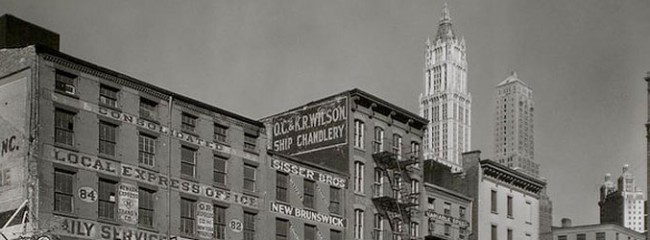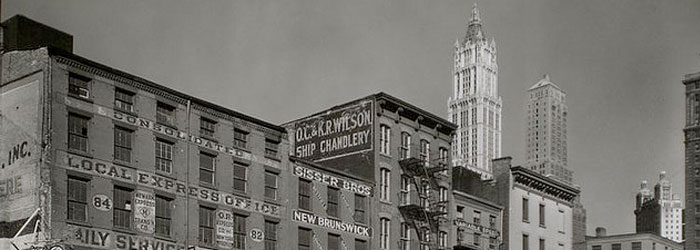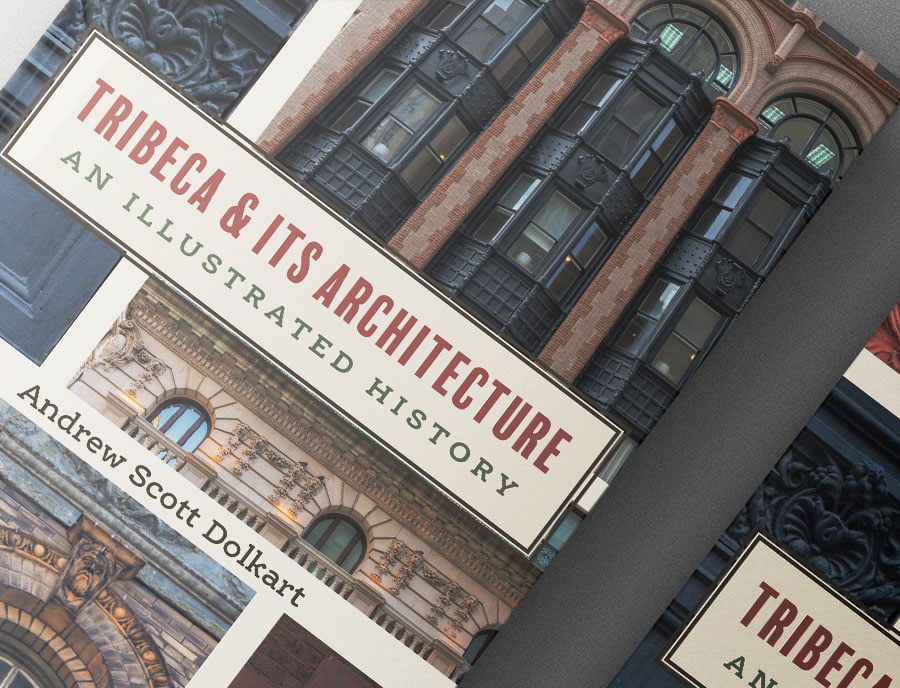Developers and their architects constantly ask us to embrace new buildings. They tell us that redevelopment of every pocket of airspace is a necessary part of capitalism’s creative powers. Although this seems a self-serving argument, we are busy, it’s not our block, so we let it go. Yet sometimes developers go too far. That is the case with the area around the Woolworth building, one of our greatest landmarks.
With explicit intention, Cass Gilbert designed the Woolworth Building for everyone to see from all around. Working feverishly in his studio, sacred music (the Stabat Mater in fact) sounding in his mind, he invented a masterpiece of architecture that seemed to rise up organically from the bustling commercial district of the old Washington Market area. The building astonishes to this day. Paul Goldberger goes so far as to call it the Mozart of our skyscrapers.
And indeed it is. What exactly is its mystery? Why does sight of the Woolworth – framed in sky from far up Broadway or West Street – give so much pleasure to so many? We think the answer is simple. The Woolworth building doesn’t just brag about how big is, nor is it merely utilitarian. It surprises because it is astonishingly beautiful and exquisitely handcrafted. Its terra cotta intricacies and lyrical setbacks emotionally connect us to the great civic landmarks of Europe, landmarks that fired Gilbert’s own imagination.
Such rare qualities, unveiling themselves in an uncluttered site near City Hall conjure in our own city an essential story that we must not let go of. The story is this: there is still a kind of capitalism that can create spectacular beauty and at the same time visually celebrate in every detail the ordinary craftsmen who built it. Moreover, it can share that beauty in a civic space instead of locking it up for private consumption. What a message that is! Contending with so much that is physically ugly, banal, and tawdry as we go about our daily struggles, the casual glimpse of the Woolworth’s beauty continues to hearten us. It encourages us to strive for similarly great achievements. For that alone we need to see it from every direction, every day, always.
But an avoidable tragedy is about to take place. The developer Larry Silverstein and the architect Robert Stern aim to build an 80-story tower right on the Woolworth’s western flank. It would bury the sight of the Woolworth and the story it broadcasts. This would be an injustice to the city. It would become a symbol of what is wrong with our zoning system. Much damage in the area has already been done. Their new tower piles on the injustice, like a schoolyard bully dealing the knockout punch.
Mr. Silverstein and Mr. Stern are both accomplished enough to consider a magnificent alternative, a great gesture for the city. Sell the air rights above the height of the landmarked buildings across the street. Sell them to a non-profit that will preserve for all time the views of this utterly unique civic treasure. In the smaller building, put a public park on the roof. Of course, an even more brilliant decision would be to grant or sell the site outright to the people of New York and turn it into a second Bryant Park. Paired with the Woolworth building, a park at that site would instantly become one of the greatest civic spaces of the world, like the one in front of Notre Dame in Paris. The Silverstein family would become public benefactors on par with the Medici or Andrew Carnegie.
Meanwhile, the City Council should do its share by giving Mr. Silverstein a tax break for doing the right thing. They should also fix the zoning problem and pass a new law that protects the views of the Woolworth Building. Other cities do this for their great landmarks. For example, London has its famous Town and Country Planning Order of 1991 protecting the views to St. Paul’s Cathedral. Why not do the same? Are we not, as our mayor might say, a world-class city? Giving the Woolworth the room to breathe and be seen from all around would show civic leadership equal to the greatness that designed it in the first place.
So the question for Mr. Silverstein is: How much for those air rights? The question for our City Council is: if not you, then who? And for those of us who merely live here, the question is: will we pass this particular wrong in silence?




